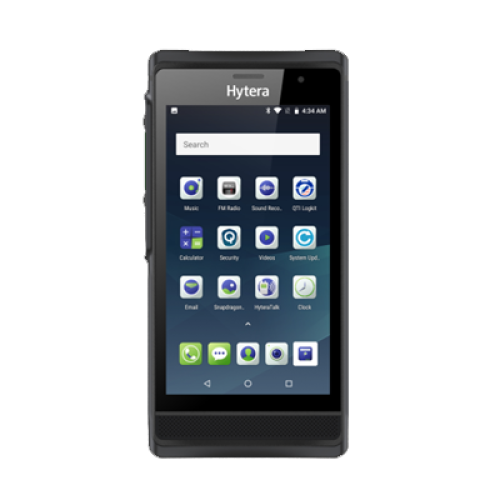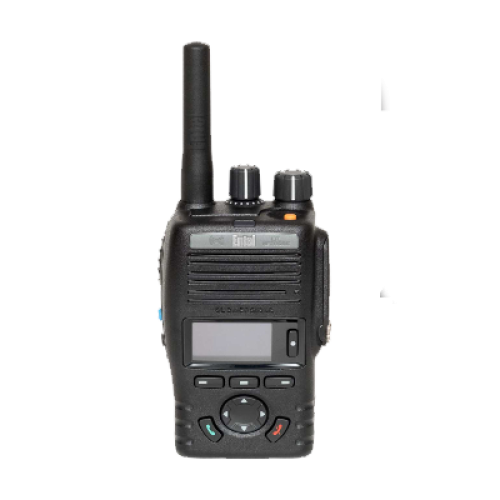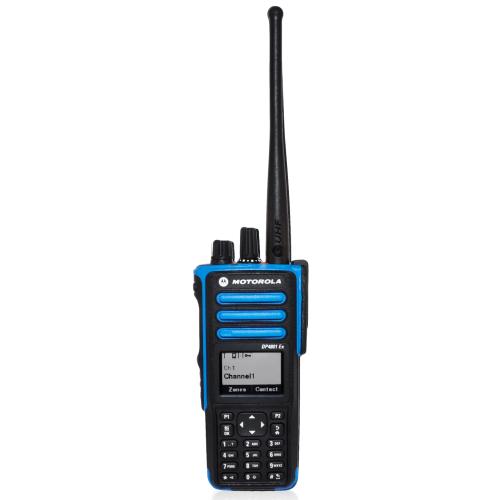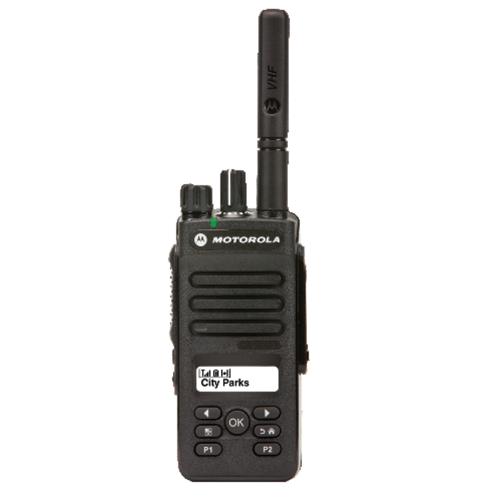Professional Mobile Radio (PMR) also known as Private Mobile Radio and Land Mobile radio (LMR) are person-to-person two-way radio voice communication systems which use portable, mobile, base station, and dispatch console radios. These communication systems are widely used to provide communication outside the normal cellular of telephone network. The PMR radio systems are based on standards such as DMR (Digital Mobile Radio). DMR this is the latest standard in UHF / VHF radio communication. Our PMR department can help you choose the right product for you. We are a supplier to the largest PMR producers like Motorola, Hytera, Entel, Icom, Sailor and many more. View the brands here.
DMR (Digital Mobile Radio)
As mentioned before, Digital Mobile Radio (DMR) is the latest standard in UHF / VHF radio communication. DMR is an open digital radio standard for professional mobile radio (PMR) applications that all comply with the predefined European Telecommunications Standards Institute (ETSI) Standard TS 102 361. The most famous suppliers of DMR products (including digital walkie-talkies, mobile radios and repeaters) are Motorola with its Mototrbo concept, Kenwood with its Nexedge solution and Hytera with its Digital Radio application.
However, there is one significant difference between the above suppliers: TDMA, meaning Time Division Multiple Access (Motorola, Hytera), which indicates that multiple users have access to a radio channel by dividing the available time among the users. Each user, therefore, uses the channel for a specific time (a time slot). Or FDMA, meaning Frequency Division Multiple Access (Kenwood), which indicates that multiple users have access to a radio channel by dividing the frequency among these users. Each user, therefore, uses part of the frequency band.
Professional Mobile Radio
Digital versus analog
In analog signal transmission, as signal strength decreases, more noise and distortion will occur in the original signal. The quality of the signal gradually goes down. In digital communication, the signal is first digitized and with decreasing signal strength, the original audio signal will be amplified. At some point, the original signal will no longer be reproducible and will fall away altogether. Digital technology offers more functionality and improved efficiency over current conventional equipment. DMR uses frequencies for land mobile communications that require a transmitting license. The major advantage of DMR is that this system has the ability to link multiple repeaters together, creating a single network. The advantages of DMR include:
- Digital Time Division Multiple Access (TDMA) technology doubles channel capacity; one frequency channel contains two time slots. This feature doubles the infrastructure's call capacity without the need for additional frequencies.
- Energy savings of 40% by always using one time slot to transmit (except for the repeater).
- Improved voice quality and longer range compared to conventional analog communication equipment.
- Integrated data communication functionalities - including built-in data modem in each type of radio, text messaging and IP packet data - allow integration with external software applications.
- A wide portfolio of intelligent accessories provides additional functionality to DMR equipment and enables communication in a variety of conditions
As mentioned, with digital radio communication, you have a number of additional features besides voice:
- Telemetry: several inputs are available on the accessory connector of a DMR mobile phone (depending on brand and type). By switching the input, a corresponding output can be switched at another mobile phone.
- Encryption: the devices can be provided with an encryption code. The encryption prevents eavesdropping, among other things.
- IP Connect: this is a repeater function known to all manufacturers, but not interchangeable. Repeaters are connected to each other in different locations via an IP connection. This increases radio coverage in a building or the size of a site.
- Capacity expansion: in addition to increasing radio coverage, it is also possible to "stack" repeaters, thereby doubling the capacity (read number of channels).

Optional services and products
Dispatch management software
Dispatch software is a software-based application for efficient control of users in a radio network. Dispatchers can be used to manage and control participants in a radio conference or to use as a control center for controlling alarm functions. The dispatcher controls the deployment of fleets, vessels, groups, and radio conference participants in the radio system and facilitates the management of participant communications. The system not only offers conventional performance features such as group calls, individual calls or emergency calls. The system is also equipped with extensions such as dynamic group assignment (DGNA), telephone conferencing (Group Patching) and eavesdropping (Monitoring). In addition to voice features, these systems also support sending and receiving short messages and status messages.
Localization (Track & Trace)
Digital walkie-talkies are applicable in various industries including the (chemical) industry, hospitals, construction companies and various municipalities and government organizations. With this system it is possible to use track & trace (positioning), this also offers various possibilities including:
- Select a radio directly on the map, to immediately start a call or a message.
- Offline maps for AVL in a self-contained, secure system.
- Configuration of "geofences" - areas with definable access rules for certain radios.
- Route tracking (Tracking): allows the playback of the movement course of specific radios.
PoC (Push-to-talk Over Cellular)
Nowadays there are newer systems on the market, the so called PoC (Push-to-talk Over Cellular) walkie-talkie network. Push to Talk over Cellular technology uses the GSM/GPRS or UMTS Voice over IP networks. The functionality offered by PoC compares well with a spoken form of WhatsApp. The user is in contact with one or more people from a list of contacts. Voice is sent via a data connection (GPRS) over a national GSM network. You therefore need a subscription to use it. Manufacturers include Motorola, Hytera and Entel. The advantages of a PoC radio are:
- Virtually unlimited range: PoC radios deliver instant PTT calls over Mobile and Wi-Fi networks.
- Easy configuration: walkie-talkies/phones can be configured for simple talk to talk or for operation with more advanced features you would expect from a high-end two-way radio system.
- Few restrictions: with a PoC walkie-talkie, the user can practically call on an unlimited number of simultaneous calls.
- No license or interference: no radio license (permit) is required (of course a subscription is required) and best of all, you will experience no channel interference from other radio users.
- Cost efficient: compared to traditional radio systems, you do not need to have your own walkie-talkie infrastructure.
These types of applications are also useful in the aforementioned industries where the transport industry (e.g. truck drivers) are a good example.
Service
Our communication department is happy to help you. With our global network, we offer unparalleled 24/7 service support, a stock of spare parts readily available to you, personalized maintenance contracts and fast turnaround times for our own equipment and those of leading manufacturers. We are your global partner for service on board and on the mainland. Read more about our service.






